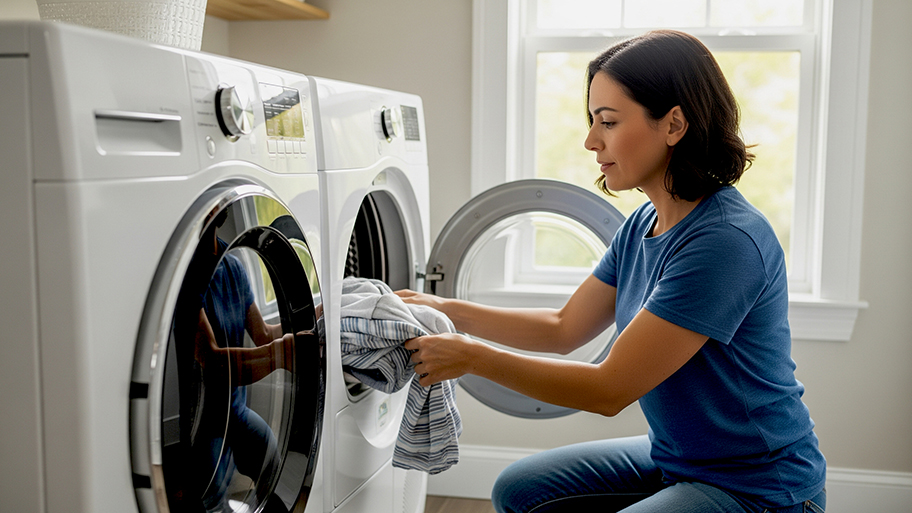
Replacing a dryer belt costs more than just the part unless you can DIY it. The labor cost can easily surpass 90% of the product cost, so if you are handy with tools, try it yourself first.
Get to the bottom of a fridge leak


Most causes of fridge leaks can be fixed easily.
The configuration of items inside your freezer can affect performance.
If leaking is caused by a frozen blockage, you may need to unplug your refrigerator until the ice melts.
The color of the water coming from your fridge could offer clues into the leak's origin.
Why is my fridge leaking? While the sight of dripping water in your kitchen may have your jaw dropping, a leaking fridge isn't necessarily a sign of a catastrophic issue. A little troubleshooting can often help you find a simple fix. Use these tips to diagnose the cause of a fridge leak easily.
To reduce the risk of water damage caused by faulty appliances, make it a habit to check for signs of dampness, mold, and pooling water monthly.
Is your freezer stuffed to the brim? It's possible that items stacked in your freezer are blocking a component called the defrost drain. The defrost drain in most refrigerators is located on the interior of the appliance's backside. When this drain is clogged, its coils will collect condensation until water begins leaking on the floor surrounding the refrigerator. You should have this potential cause on your radar if your leak began soon after you stacked items in your freezer following a grocery haul.
The easiest fix in this case is to simply remove any freezer items that are blocking the drain clog. You can usually just rearrange items until air is able to flow freely through the drain. It generally takes 24 to 48 hours for leaking to stop once you've rearranged your freezer.
If puddling persists after playing musical chairs with your frozen items, it's not time to rule out a clogged freezer drain just yet! Small crumbs and ice particles could also be behind your clog. In order to rule out these tiny culprits, a DIY flushing is in order.
The hardest part of this otherwise simple fix is that you'll need to find a way to transfer food from your refrigerator and freezer to another fridge or cooler because your main unit will be unplugged. Once your refrigerator is empty and unplugged, remove the drain hole over your defrost drain to flush the component with warm water using a funnel or baster. This should allow air to flow again.
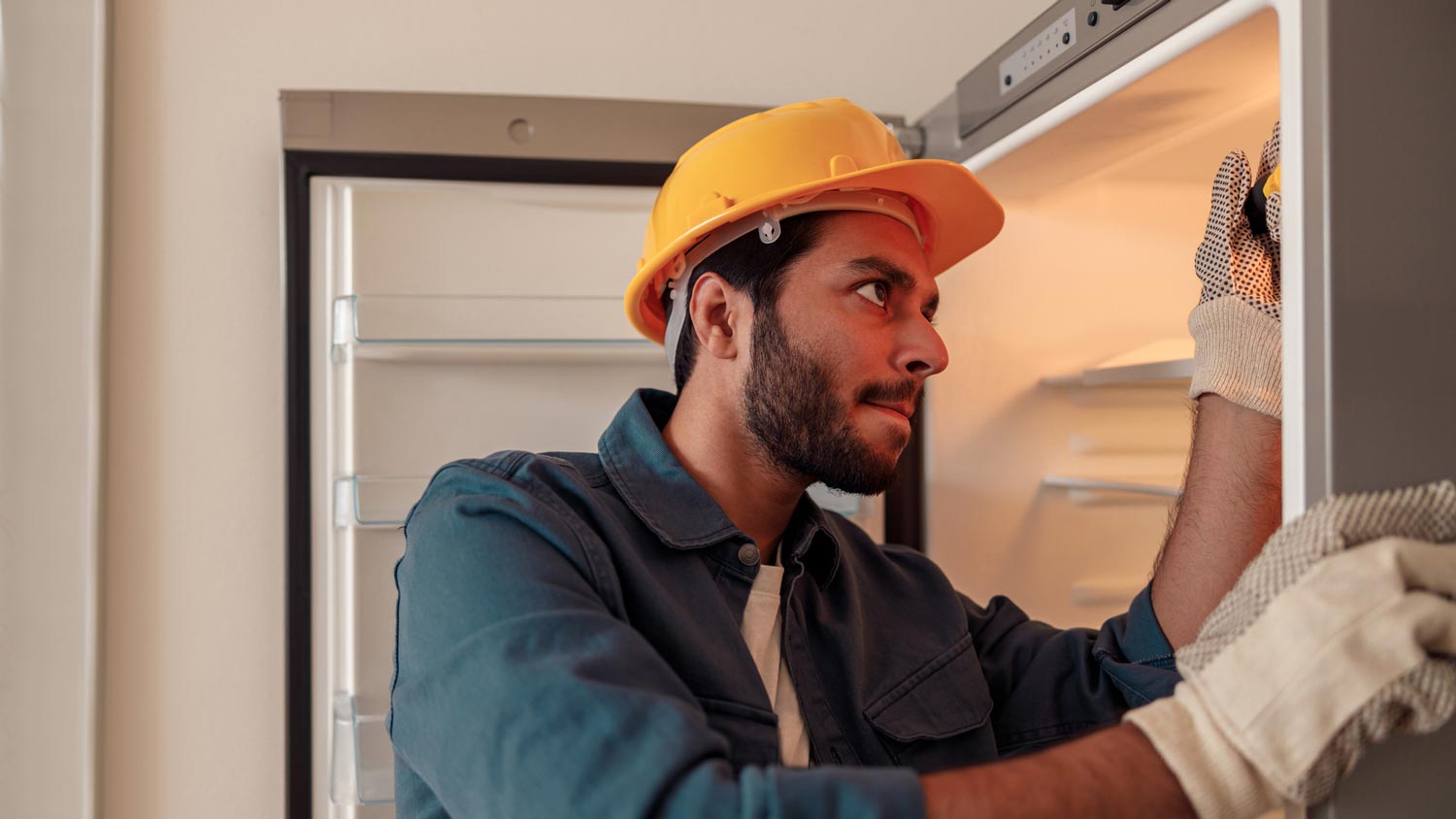
It's probably not just a coincidence if your refrigerator's ice machine or water dispenser stopped working at around the same time you noticed a puddle of water spreading from under your refrigerator. This is a sign of a blocked or damaged water line. Almost every modern refrigerator has a water line that serves as the water source for the water filter and ice maker.
After unplugging your refrigerator, pull it away from the wall to look for a plastic hose. If the hose is dripping, it needs to be replaced. If the hose appears to be intact, this could mean that you need to let the refrigerator remain unplugged for up to five hours to allow an ice blockage to melt. Unlike a garbage disposal that's leaking from the bottom, a fridge that's leaking from the bottom probably doesn't need to be replaced.
Floors can sag over time as homes settle. The weight of a heavy refrigerator can accelerate sagging in your kitchen floor. This is why it's wise to confirm that your fridge is level if you notice a puddle forming under it. While the doors on an unlevel fridge will often have trouble staying shut, this clue doesn't always accompany leaking.
An unlevel refrigerator is actually a problem long before it causes leaking. Temperature fluctuations created by even the slightest amount of tilting can cause food to spoil. Once the tilting gets to a point where coolant can no longer flow, you'll get condensation and leaking.
The easiest way to check if your fridge leak is caused by a tilted refrigerator is to confirm that the appliance is level. You can do this by placing a level straight across the top of the fridge. Most refrigerator manuals include instructions for how to adjust the legs to be level. Always use a helper when adjusting the positioning of your fridge for safety's sake!
If your fridge is leaking brown liquid, this is a sign of an oil leak. An oil leak in a fridge is usually caused by a compressor failure. A refrigerator compressor keeps refrigerant circulating.
While a compressor doesn't actually need oil to run, it contains oil-based lubricants that help to slow down wear and tear. Tiny cracks will cause these lubricants to turn black after mixing with oxygen in the air. This is the cause of the alarming black sludge that you might see trickling out from the undercarriage of your fridge. While cracks can sometimes be repaired with sealant, it's usually time to replace your compressor if you're seeing oil marks.
Mopping up the water, crossing your fingers, and hoping that the moisture won't return is not an option if you want to do this the right way! Start by investigating the common causes of fridge leaks above. If you still need more answers, contact local fridge repair experts. The average cost for a fridge repair ranges from $40 to $350. If you've had to foot the bill for coolant leak repair costs for your home's cooling system in the past, you'll be glad to know that swapping out a refrigerator hose often costs much less.
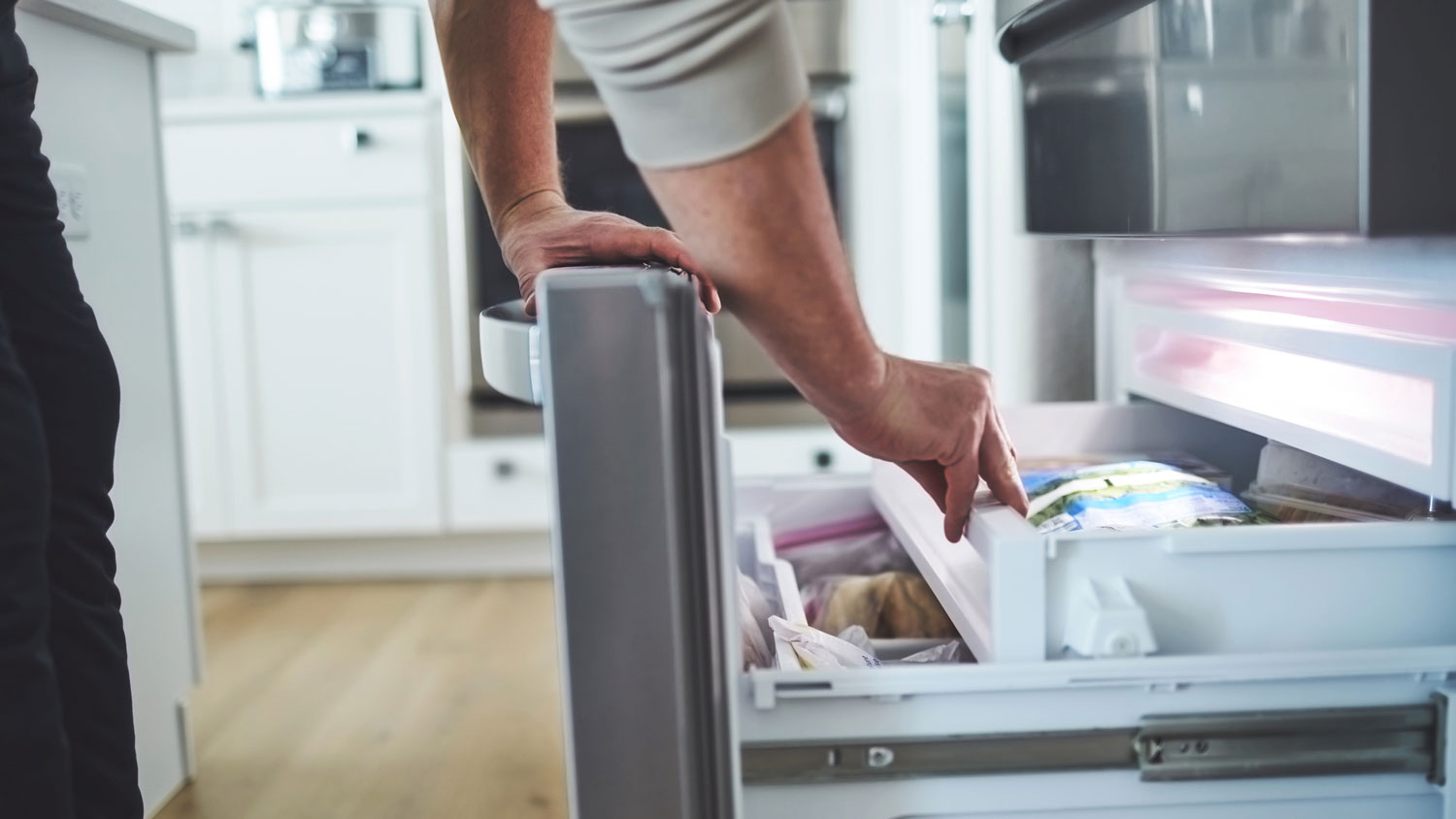
Once you've taken care of a leak, you'll be eager to avoid ever having a puddle in your kitchen again. Luckily, some simple fridge maintenance tips can keep water away. The tips below can help you to keep your refrigerator chugging along.
It's common for fridge leaks to occur after large grocery hauls. Lining your freezer's back wall with stacked food can throttle the defrost drain. Be methodical about placing items in the freezer. If you routinely have trouble shutting the freezer door, consider purchasing a backup freezer that you keep in a garage or basement.
If you're bringing a new refrigerator home, make sure to check that it's level after installation. You should also confirm that an existing refrigerator is level if you're moving into a new place. While a fridge should never have any side tilt, your owner's manual will probably instruct you to position the front of the fridge slightly higher than the back to achieve a proper door seal.
A freezer should be defrosted at least once annually. A big defrosting helps to eliminate frost buildup that can lead to clogs and leaks. Routine defrosting also helps to boost a fridge's efficiency.
Great experience all together. Dog friendly, courteous, great results and honest with recommendations. Will certainly be using Cardinal in the future for any carpet repairs
We used Unique Hardwood Floor LLC three years ago to work on the floors of a 70 year old home that needed a great deal of work. Some floors needed repairs, some were replaced and others just needed to be refinished. It was a complicated job as they needed to blend the old and the new to...
Phil understood the style I wanted and suggested options for materials (unlike the standard kitchen folks who kept pushing the same cabinets everyone buys). He stepped through all the decisions about the details with me, using his computer program to show the differences between the choices....
They were on time. Did a thorough job everything was very clean. They did a the whole house INCLUDING APPLIANCES. Price was very reasonable.
I was delighted with SemBro. The kitchen designer (Nadia) created a design that was both very attractive and functional, including some features that we had not ourselves imagined (e.g., corner cabinets). The design far exceeded what another company had generated. After we visited the...
Had a ceiling collapse in my rental unit. Scott responded quickly to repair the ceiling in a timely manner.
Great, I did not have show up to the apartment and baby sit. He met with my tenant within the time frame promised, he repaired the appliance at a reasonable cost, and he communicated issues.
What a pleasure working with a professional organization that takes pride in its work and wants to ensure customer satisfaction. Out of the several quotes I received for the re-roof, Capps was not the cheapest, but I felt I could trust them to do an excellent job and I was not disappointed....
I had what looked like a failed hard drive on my laptop. Unable to boot, tried all the repair disks and could not get the laptop to start up. The laptop had been acting quirky and even had the blue screen of death before it failed to start up. Eric gave me the straight story on odds of...
My brother got information on this company while at the Garden Show at Cincinnati's Duke Energy Center a few weeks ago. A representative he spoke to suggested taking pictures of the chair he wanted re-upholstered and sending it to them via email for an estimate. He took pictures of the...
From average costs to expert advice, get all the answers you need to get your job done.

Replacing a dryer belt costs more than just the part unless you can DIY it. The labor cost can easily surpass 90% of the product cost, so if you are handy with tools, try it yourself first.

Garbage disposals last five to 10 years, and replacement is preferred over repairs. Here’s everything you need to know about replacing your garbage disposal.

Microwave replacements are relatively affordable compared to other appliances. Use this guide to learn how much they cost based on factors like type and labor.

Washing machine not spinning? Don’t panic—just because it appears to be broken doesn’t mean you can’t get your washer running again. Read on to learn how.
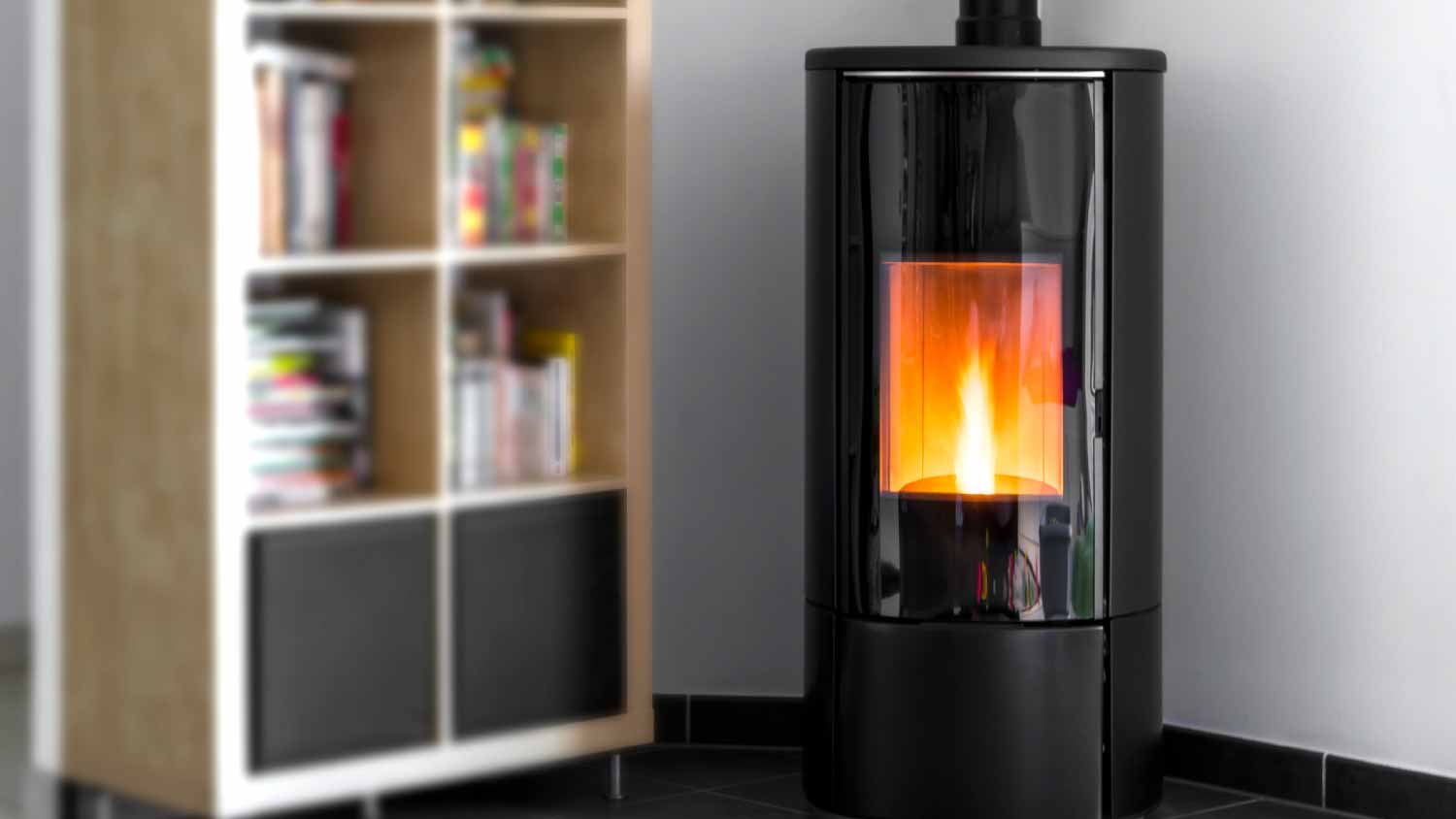
Not sure who to hire to repair a wood pellet or gas stove? See which pro to call, what they do, and how the repair process works.
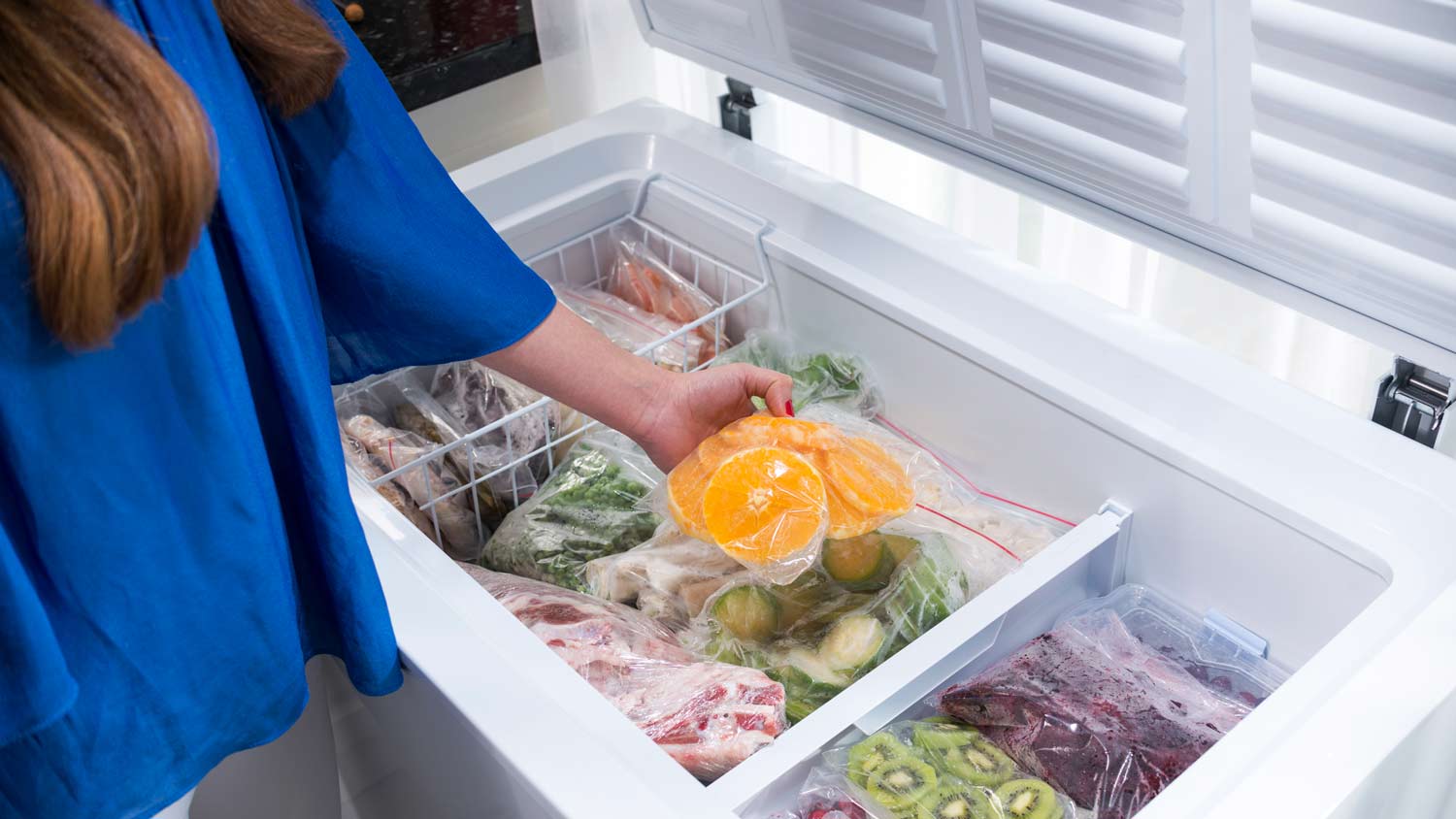
Discover deep freezer costs, including installation, maintenance, and repair expenses. Learn what impacts pricing and how to save on your next deep freezer.